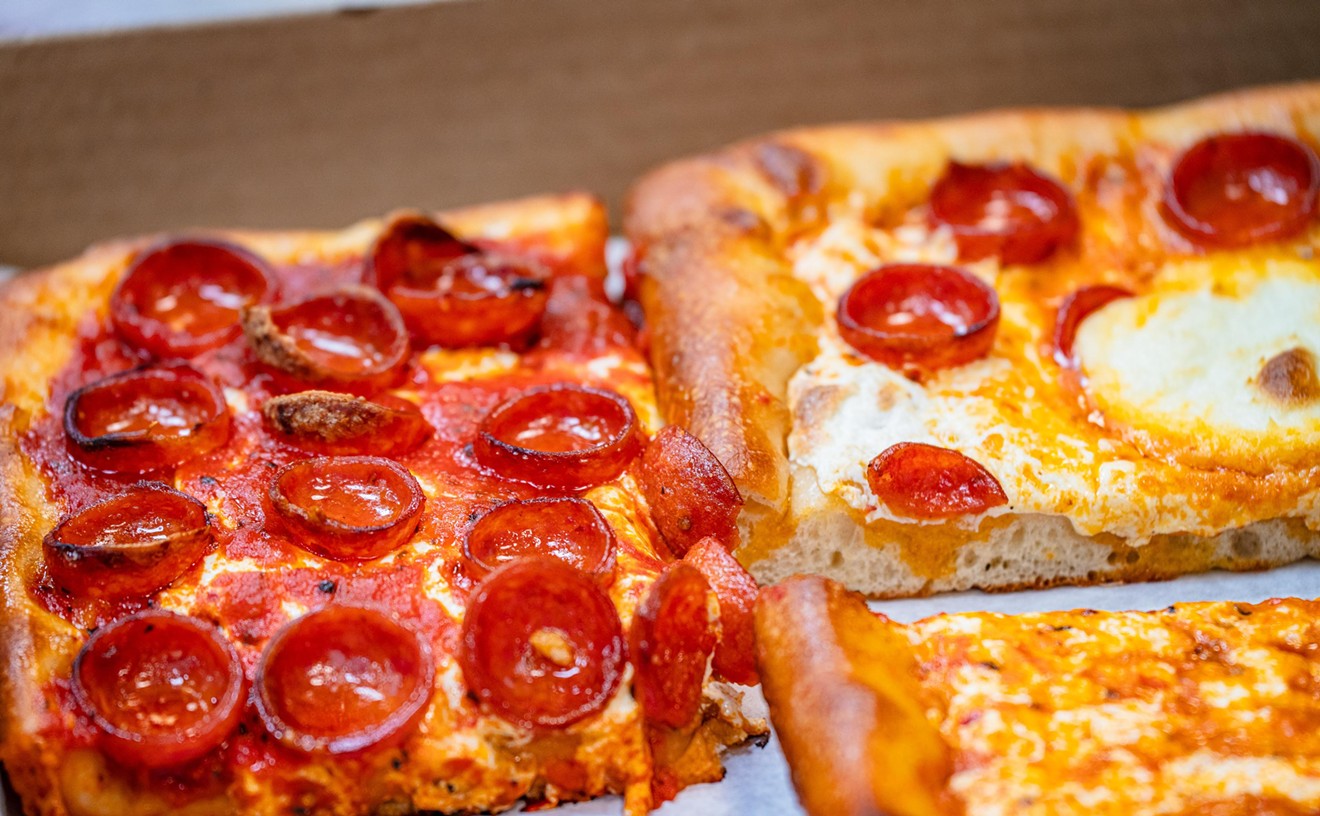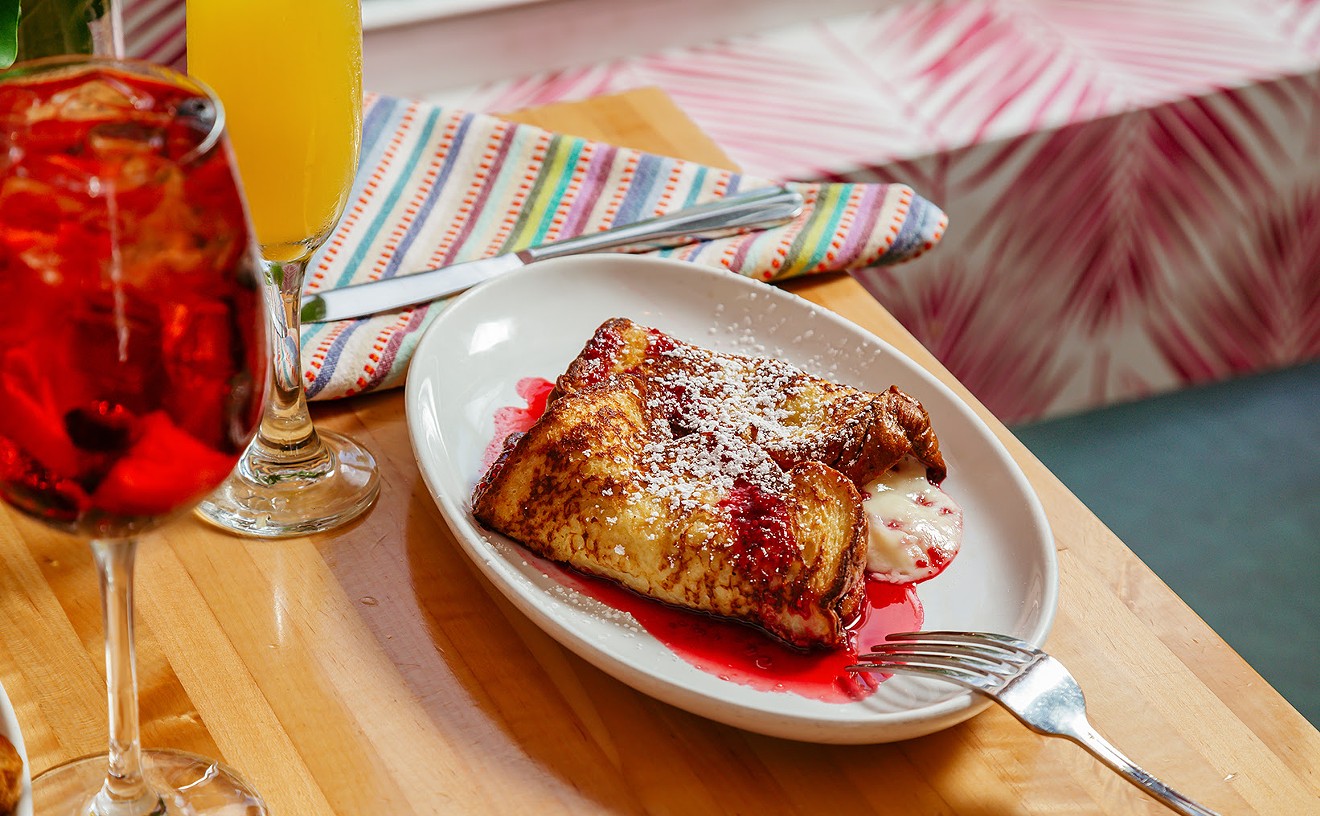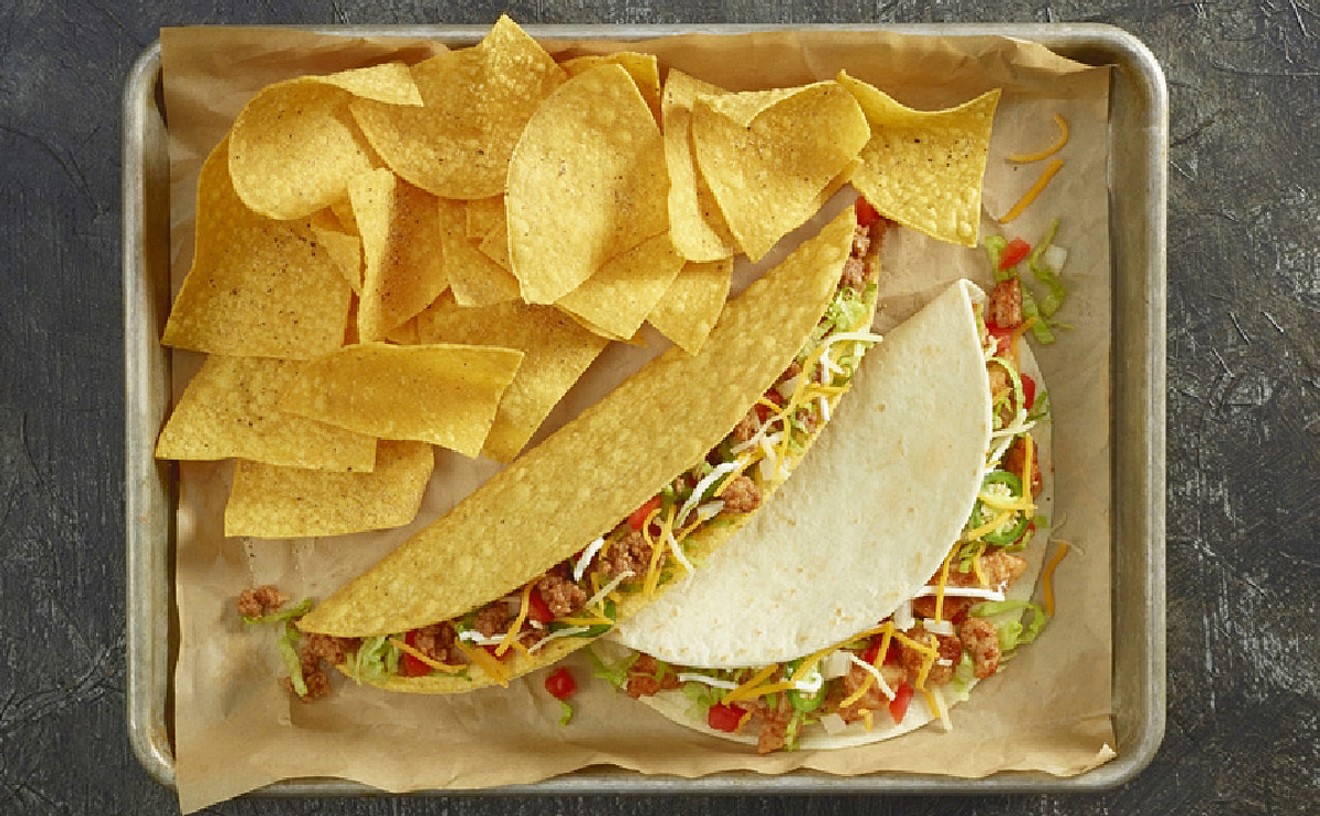I love even incredibly dirty kitchens to distraction."
Too bad she said it first. I feel the same way about restaurants. Big or small, upscale or downscale, spotless or slovenly -- I adore them, every one. In theory, anyway.
In reality, a devotion to dining out does not preclude being discriminating. This is not a blind passion, after all -- I see (and taste and smell) perfectly well. Going in, I'm prepared to love every restaurant; it's up to the restaurant to ensure that my affections are ultimately engaged.
The best way to a critical heart is not just through the proverbial stomach, though the fare is certainly the foremost aspect of the meal. Nor is the path solely via the other senses. A beautiful setting alone can't make up for crummy food. It's the flawless marriage of delicacies to decor -- a presentation for which every restaurant should strive, and which the four-month-old Spanish-Mediterranean Cafe Barcelona achieves -- that wins me. I guess I'm just an old-fashioned girl.
Old-fashioned is a word that springs to mind at Cafe Barcelona. Like the city of Barcelona itself, the Coral Gables cafe gleams with old-world appeal. The storefront restaurant is made spacious by a high ceiling; distressed stone siding on the walls lends an appropriate outdoor feel (Barcelonans, like Miamians, dine alfresco whenever possible). Accents of green and gold add warmth. The restaurant is clearly new, but the patina is one of timelessness and endurance.
My guests and I were seated under the perfect symbol of timelessness and endurance -- the heavily laden wine rack. We abandoned the notion of a bottle with dinner, however, in favor of a pitcher of sangria. This dark red, fruity refresher was served in short, chunky rocks glasses rather than slender-stemmed wine glasses, to good provincial effect. Right then, I wouldn't have minded a large hunk of yellow cheese and some crusty bread for dinner, served on a blanket in a field of sunflowers. But bread was slow in coming and sunflowers were out of the question, so we contented ourselves with a complimentary dish of briny black olives in oil. Though olives soaked (or stored) in oil are somewhat akin nutritionally to hardboiled eggs mixed with mayonnaise -- i.e., very fattening -- we ate them with the same gusto the twice-damned reserve for further sin.
Oven-hot rolls made a welcome if belated appearance; the server brought with them two ramekins of garlic-and-herb butter, one for each side of the table. Once begun, this kind of thoughtful service continued throughout the evening; in fact, they tried a little too hard, going so far as to light my guests' cigarettes, but we found ourselves pampered rather than irritated by their efforts.
We felt the same way about the piano in the corner. I generally dislike lounge music while I'm dining, not only because of the typical style of song but also because it tends to be overly loud in smaller restaurants. This pianist had a repertoire Steve and Eydie would be proud to claim and a tip jar we felt obligated to contribute to when, in truth, the restaurant's proceeds from our meal should have been enough to cover his salary generously. In upscale restaurants, tipping the live entertainment is like slipping the chef a fiver. At least his dynamics were unobtrusive.
We began our meal with an appetizer that contained more of the garlic and butter than we had slathered on our bread. Six plump, medium-size shrimp sizzled amid a scampilike sauce. Though delicious, this simple starter was a bit unusual for a Spanish restaurant; where other countries might use butter, Spain usually deploys olive oil. The last time I came across this appetizer was when, as a cocktail waitress, I served it to hungry drunks in a British pub in California. The combination of shrimp, garlic, and butter is indeed a universal one.
The origins of our other appetizer were easier to pinpoint. Four tender zucchini halves, stuffed with a tasty mix of ground beef, raisins, and pine nuts, lay on a bed of tomato sauce seasoned with rosemary. The filling, similar to a picadillo, lay claim to the Moorish influence that is prevalent in southern Spanish cooking. But like butter, beef is an oddity; more often the Spanish use veal or lamb. Cafe Barcelona also draws on other Mediterranean cuisines, however, and features a variety of game and domestically raised meats in its entrees.
We were impressed with the brochette, a meat and seafood dish also of Moorish origin. Marinated, pungent lamb and succulent shrimp were skewered with pieces of peppers and onions, then grilled. Unlike typical presentations of brochettes, this dish boasted a generous portion. Creamy spinach and sauteed vegetables fleshed out the plate. In addition, like all the entrees, it came with a choice of the house salad or soup of the day.
One of my guests substituted the gazpacho Andaluz for the soup of the day (cream of cauliflower). The gazpacho was a just-chilled version of C centsrdoba's famed soup, a fine, thin blend of tomatoes, olive oil, green peppers, sherry vinegar, and bread. My guest embellished the smooth and sharp pinkish puree with chopped onions, cucumbers, and eggs from a tray the server held. The rest of us enjoyed the tasty little salad, a mix of shredded romaine and juicy tomatoes, dressed with a tangy balsamic vinaigrette. A leaf of endive and a radish rose garnished the bowls.
A special that night of chicken and Florida lobster tail was adorned unexpectedly with two beautiful langostinos, large shrimp with shells, heads, and legs still attached. Langostinos are a street food along the Spanish coast, as common as hot dogs in Manhattan. Locals suck the juice from the crustaceans' heads, but my friend turned as green as the trim on the walls. Fortunately for her, the lobster tail had been shelled, curling modestly on the plate as if to hide its fresh naked pinkness. The entire affair was topped with a rich, mildly piquant chocolate sauce, similar to the Mexican and American southwestern moles but not as thick.
One of the pleasures of Spanish cuisine has always been its emphasis on fresh fish; the real treat at Cafe Barcelona was the lubina a la sal, whole sea bass sealed in salt and served for two. The service of this dish was more entertaining than the piano man. The white-fleshed bass was completely covered by coarse sea salt, which became a crust when baked in a clay pot. The entire casserole was brought tableside, where our waiter inefficiently chipped away at the salt with two knives. We suggested an ice pick but he either hadn't seen Basic Instinct or he didn't appreciate our encouragement. At any rate, he eventually removed all of the salt and proceeded to skin and bone the fish, dividing the fillets between two plates. Food cooked in this fashion is surprisingly unsalty and exceedingly tender, and the sea bass was no exception, the salt acting like a lid to keep the flesh moist as it cooked. A trio of sauces was served on the side: a thick tartar, an admirable garlic-and-tomato, and a parsley-vinegar, none of which was necessary to enhance the plain but superb sea bass. The fresh, clean flavors of the accompanying sauteed vegetables were more than enough complement.
"When it comes time to die, I want to breathe my last in a kitchen," writes Banana Yoshimoto. "If it's a kitchen, I'll think, 'How good.'" Much as I enjoy restaurants, I don't want to die in one. But I wouldn't mind living at Cafe Barcelona more often. "How good.









